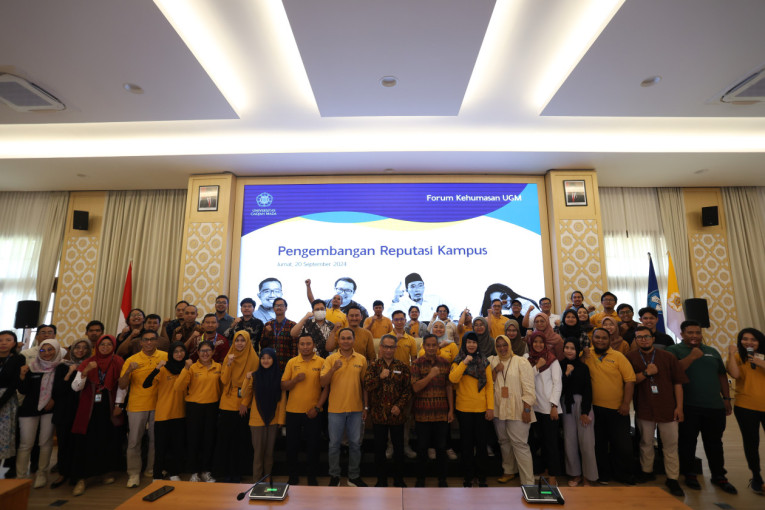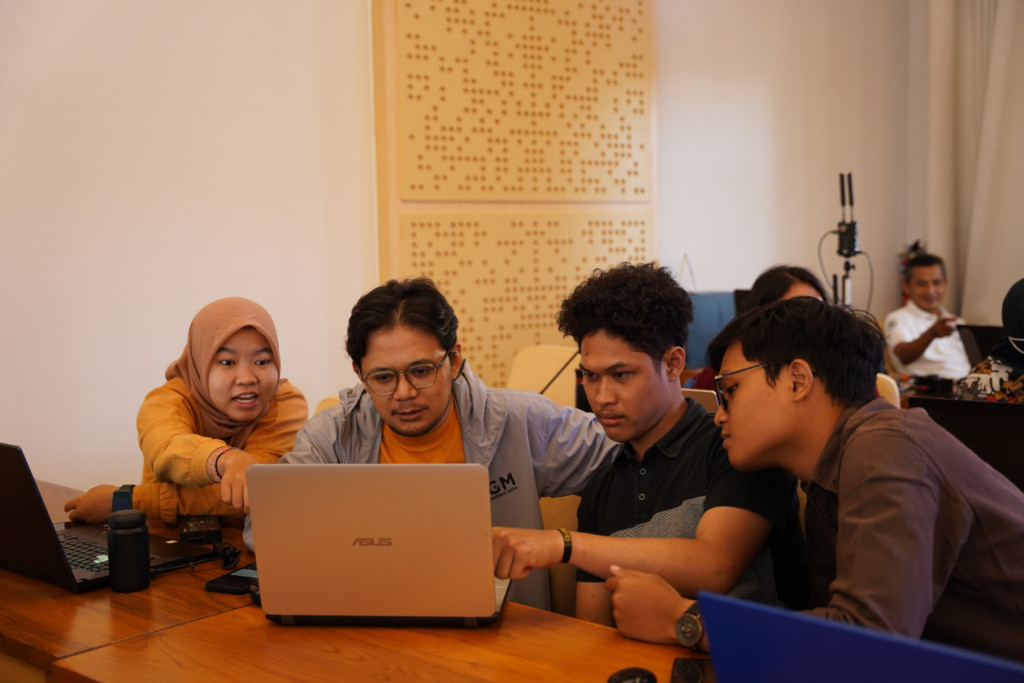
In the current era of communication technology and social media development, negative news trending on social media can easily impact an institution or company.
Therefore, it is necessary to develop strategies for building reputation. This issue was raised in a workshop titled “Developing Campus Reputation” held on Friday (Sep. 20) in the Multimedia Room of the UGM Central Building, organized by the Secretariat of Universitas Gadjah Mada (UGM).
This workshop was attended by representatives from various work units, directorates, faculties, and communities.
Dr. Andi Sandi Antonius Tabusassa Tonralipu, the Secretary of UGM, emphasized the importance of the university’s reputation, which can be easily influenced by the actions of individuals carrying the UGM name.
He then invited all participants to take advantage of this workshop to build a positive image of the university in the public eye.
“I hope this workshop can provide benefits and be applied, not only for units that handle UGM publications but for all UGM elements involved,” he said.
The workshop invited four speakers and professional practitioners to provide tips on strategies for building a better university reputation. The four speakers were Mohammad Ryan Saputra, Winda Pratiwi, Farchan Noor Rachman, and Tirta Mandira Hudhi.
In the first session, Mohammad Ryan Saputra, one of the speakers, led a case study and group discussion.
He presented two case studies from a university. According to him, it was important for every participant to be able to analyze the cases for later assignments.
As an expert in social media strategy, Saputra provided participants with insights into mastering the media landscape and building a campus narrative, particularly at UGM.
Participants were then divided into groups based on their work units and presented their case analysis and strategy plans.
In the presentation session, four UGM faculties and work units, including the Directorate of Community Service (DPkM UGM), the Faculty of Economics and Business, the Faculty of Cultural Sciences, and the Faculty of Engineering, presented their discussion results.
During this session, participants received feedback and additional input from Mohammad Ryan Saputra and Winda Pratiwi, the speaker for the second session.
In their feedback, several strategies were proposed. Pratiwi emphasized the importance of savvy newsmakers in selecting how they present their news.
“There are white and black campaigns, which produce different impacts. Therefore, it is necessary to be tactical in selecting them,” said Pratiwi.
When dealing with audience responses to created content, Pratiwi stated that it is important to respond properly by inviting dialogue rather than providing clarification.
“Social media isn’t that scary. They are talking about the context of the content, so there’s no need to feel as though an institution is being vilified. It’s better to invite netizens to dialogue,” she explained.
Pratiwi encouraged all participants to develop effective communication strategies in crisis management. After reviewing a case study, she then tasked participants with creating a video counter-issue campaign on social media.
“The key to counter-issues cannot be viewed at face value alone. We also need to know who needs to be won over in the case,” she said.
Pratiwi revealed that everything is done to handle crises that often conflict with one’s conscience.
“I am required to take a professional stance, so what I do is acknowledge that this is merely a job that must be done professionally,” she shared.
She also added that content creators should pay attention to the variables noticed by the audience, from writing style to music selection, when creating videos.
“Make sure the audience’s focus is not scattered so that the value of the content can be clearly conveyed,” she added.

Farchan Noor Rachman provided an example of a bullying case and invited workshop participants from various UGM faculties and institutions to draft a press release related to the incident.
Rachman emphasized to participants that when writing a press release, they must highlight three aspects: logic, chronology, and apology so that the public can accept a tarnished institution.
“These three elements are prudent and must be included in a press release when clarifying an incident,” he explained.
After participants finished drafting press releases for the public relations crisis case used as a study case, the press releases were displayed for collective review and feedback.
Meanwhile, Tirta Mandira Hudhi approached the case study differently. In his session, he asked participants to create a chronological flowchart outlining the steps to be taken to handle a public relations crisis a business unit faces to restore its reputation.
Participants were also asked to perform a risk analysis for each solution option proposed. This was done to train workshop participants to devise crisis communication solutions for the university.
According to Hudhi, flowcharts are essential in creating crisis communication handling protocols, as they help the crisis management team understand the steps to be taken to initiate and resolve the crisis.
“Flowcharts are crucial because they reflect your critical thinking skills, whether you can map out your thoughts. With a flowchart like this, the whole team knows what needs to be done,” he explained.
This workshop was expected to make all participants more adept at public relations crisis management. In the future, they could use their skills to prevent and resolve public relations crises within their respective work units.
Authors: Lintang and Hanif
Editor: Gusti Grehenson
Post-editor: Afif
Photographer: Donnie

